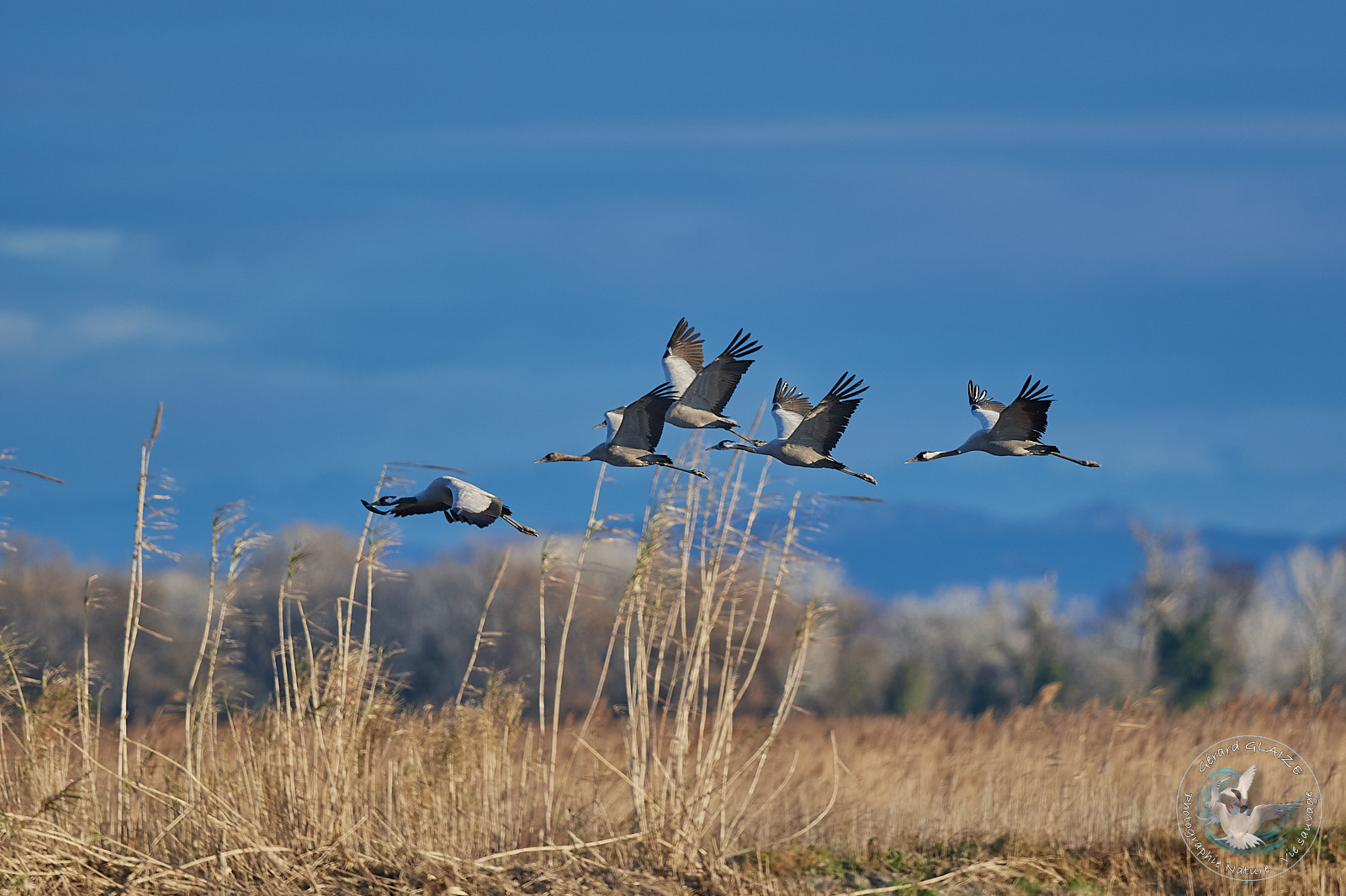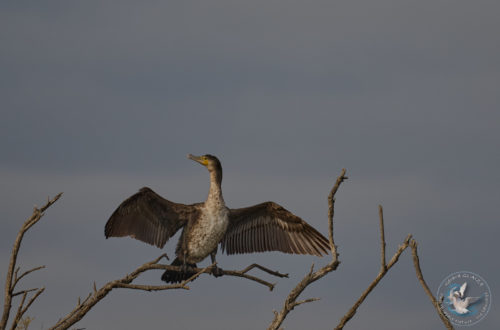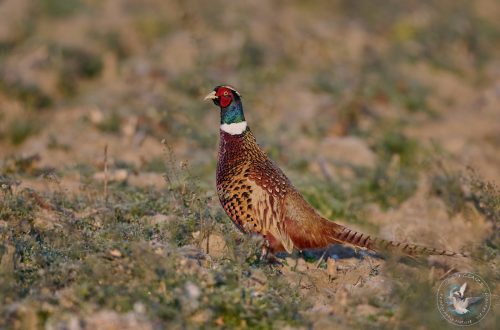Common Crane
The Common Crane is one of the largest birds in Europe. It has slaty gray plumage, with black or bluish black feathers on the primaries and secondaries. A red cap located on the top of the head is also more or less visible depending on the season. The upper neck, throat, forehead and nape are black. A white patch starts from the eyes and extends toward the back of the neck. The long bill is gray with a little reddish at the base, eyes are red. The long legs and feet are black.
With spectacular group movements at sunrise, the common crane is active from dawn. They glean in fields and cultivated areas until dusk. Then they return to the dormitory, still screaming, and stay in groups at night. While feeding, they perform a sort of dance, as during the nuptial period. Very shy, the crane takes advantage of group life to multiply the number of pairs of attentive eyes.
Common Crane
Scientific name : Grus grus
Family : Gruidae
Length: from 100 cm to 120 cm – Wingspan: from 180 to 240 cm
Weight : from 4.000 gr to 7.000 gr
Flight altitude : from 200 m to 1.500 m
IUCN Conservation Status : LC
Flight
The cranes fly with their necks and legs outstretched, and in migratory flight often in large groups, and in formation (in a line, in a V), the group is then guided by an individual who, once tired, takes a place at the rear. Their flight is slow and powerful, often with a few wingbeats followed by a short glide. Permutations are quite common. Cranes can thus fly very high and over long distances. Migratory flights are V or Y shaped.
Habitat
The common crane breeds in muskeg, damp heather moors and shallow freshwater marshes, as well as in swamp forests. They winter in open countryside, near lakes and marshes, or further afield in cultivated areas. It prefers open environments to spot the slightest suspicious movement in time thanks to its excellent visual acuity. Its flight distance, 300 m on average, can reach 1 km in its nesting sites.
Common Crane in picture

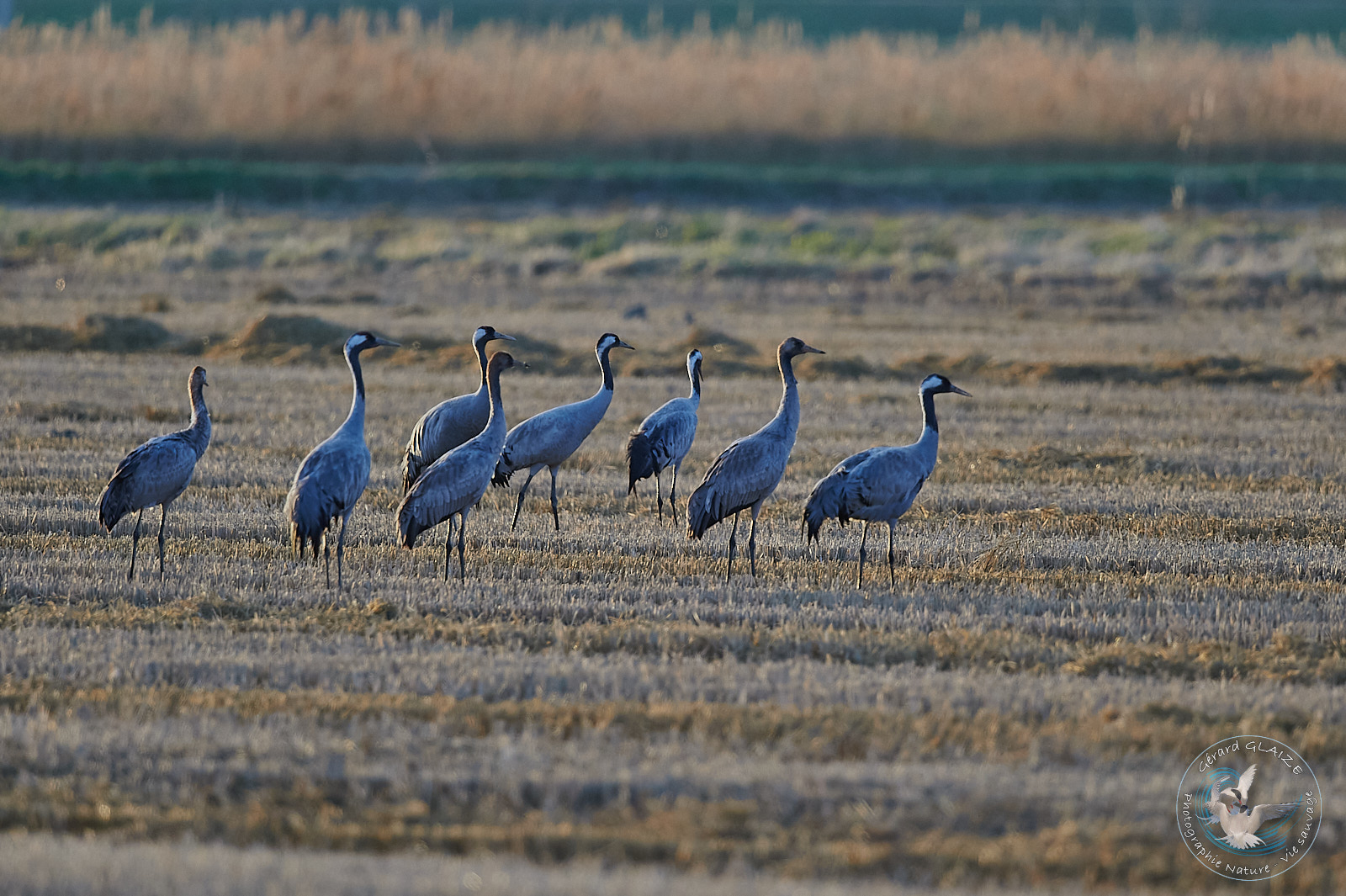
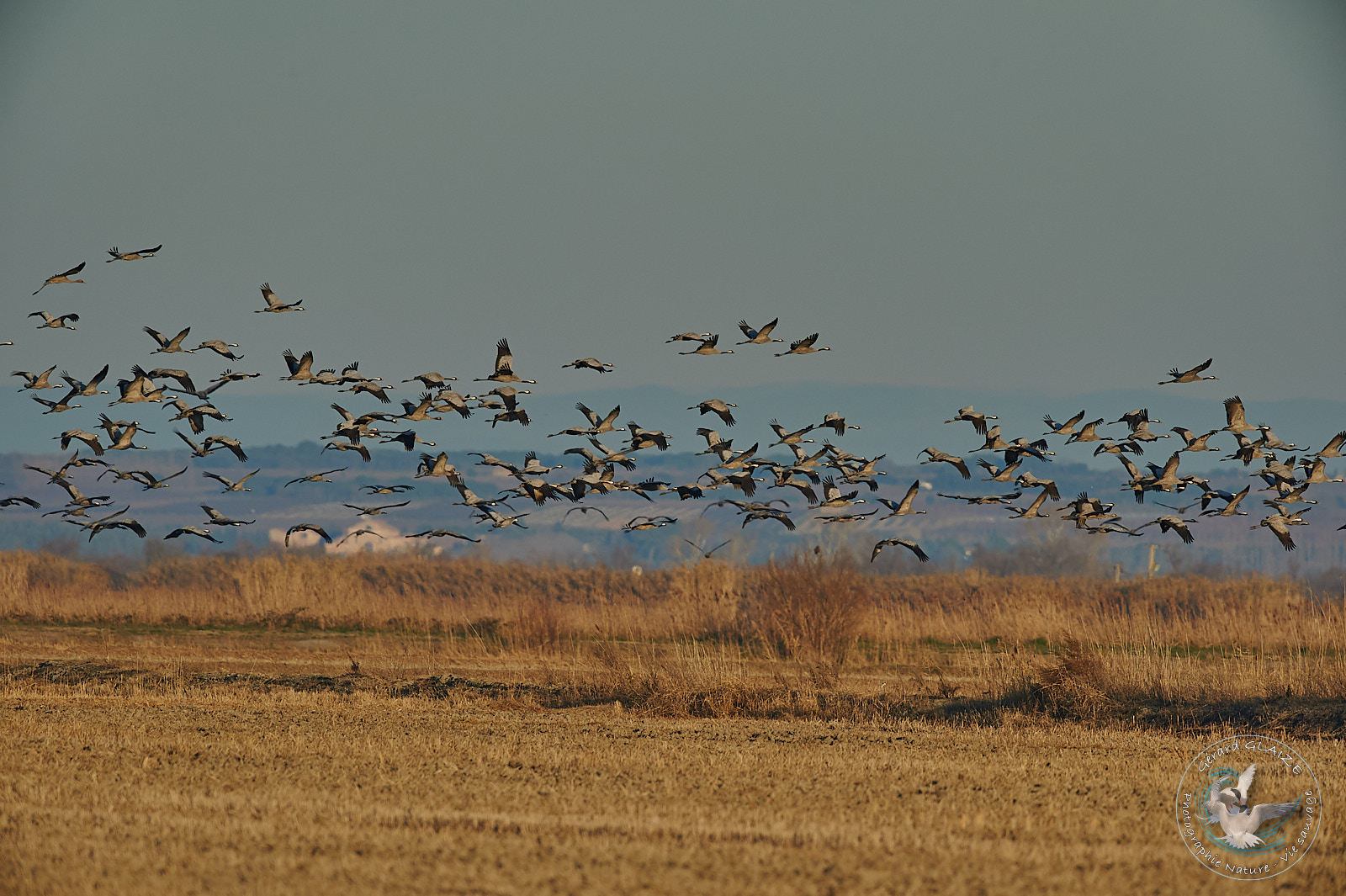
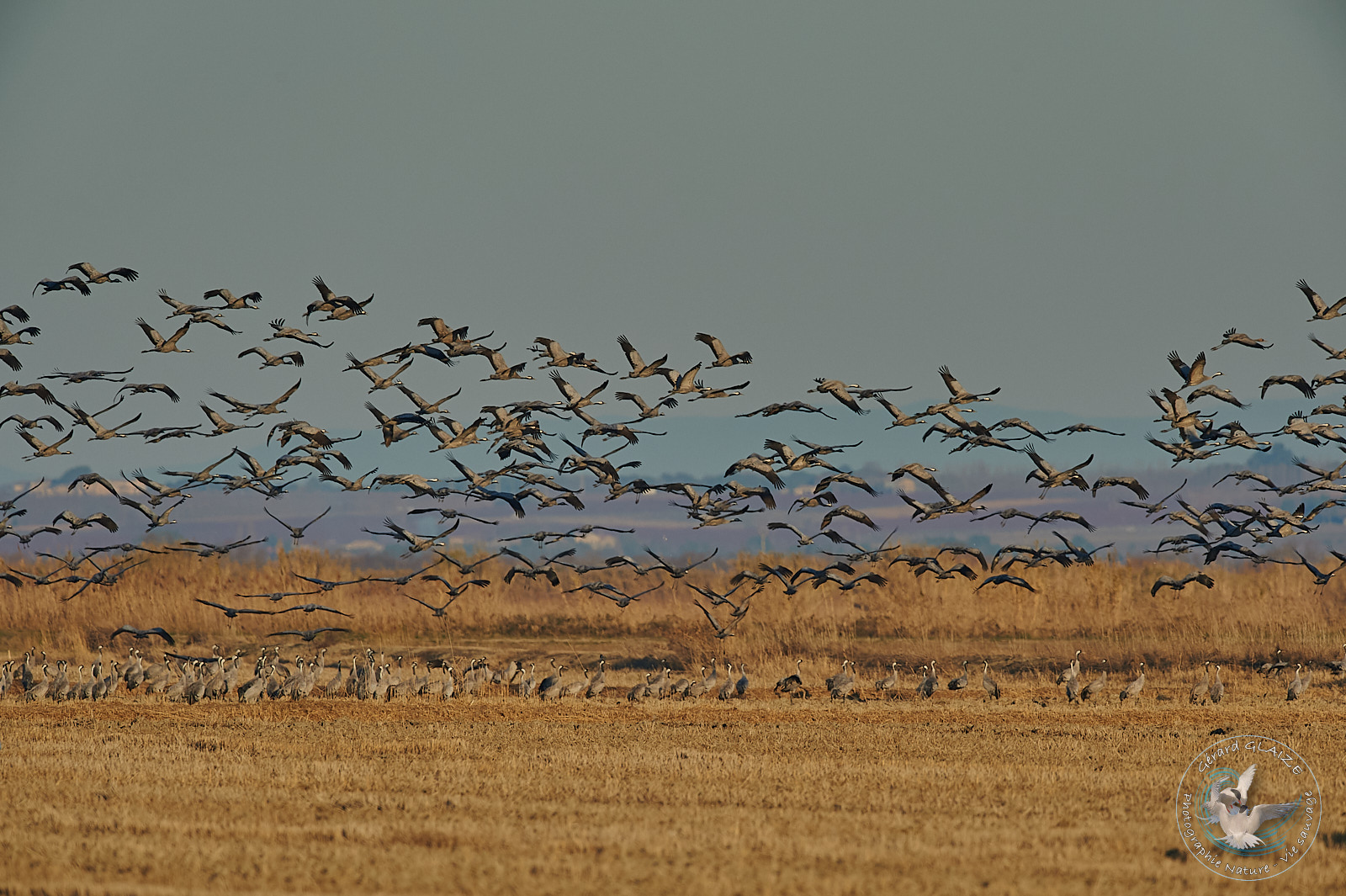
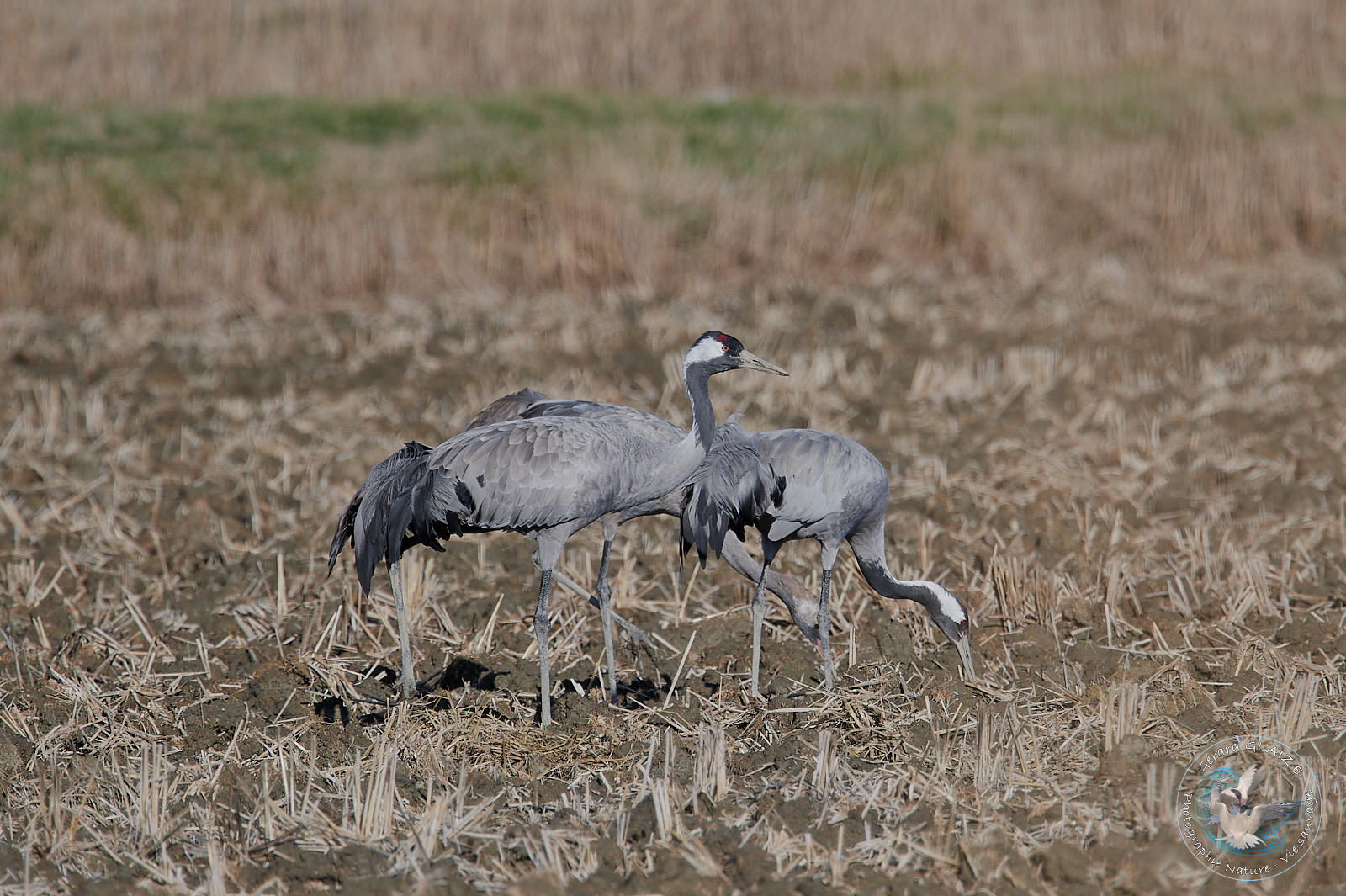
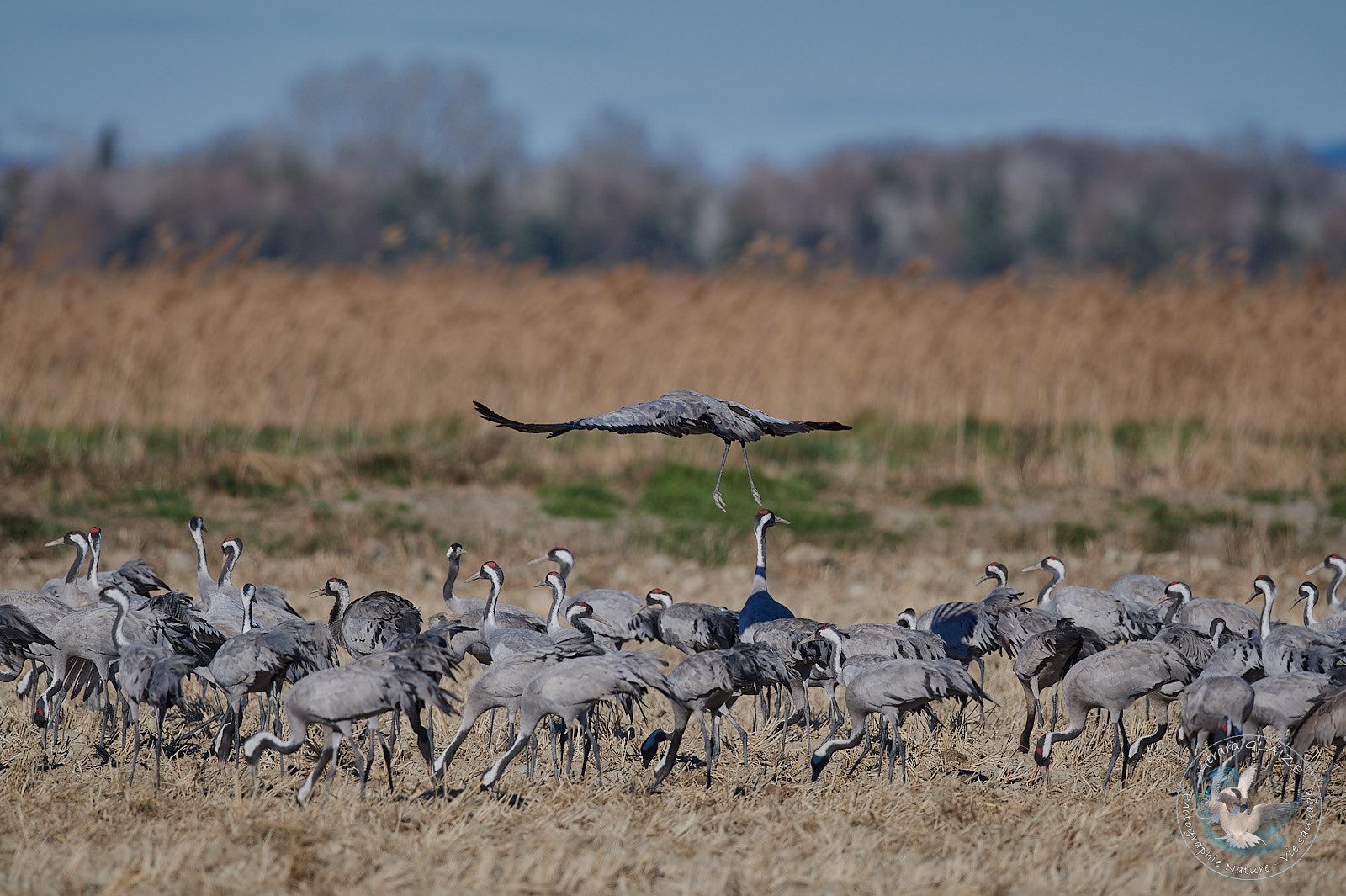
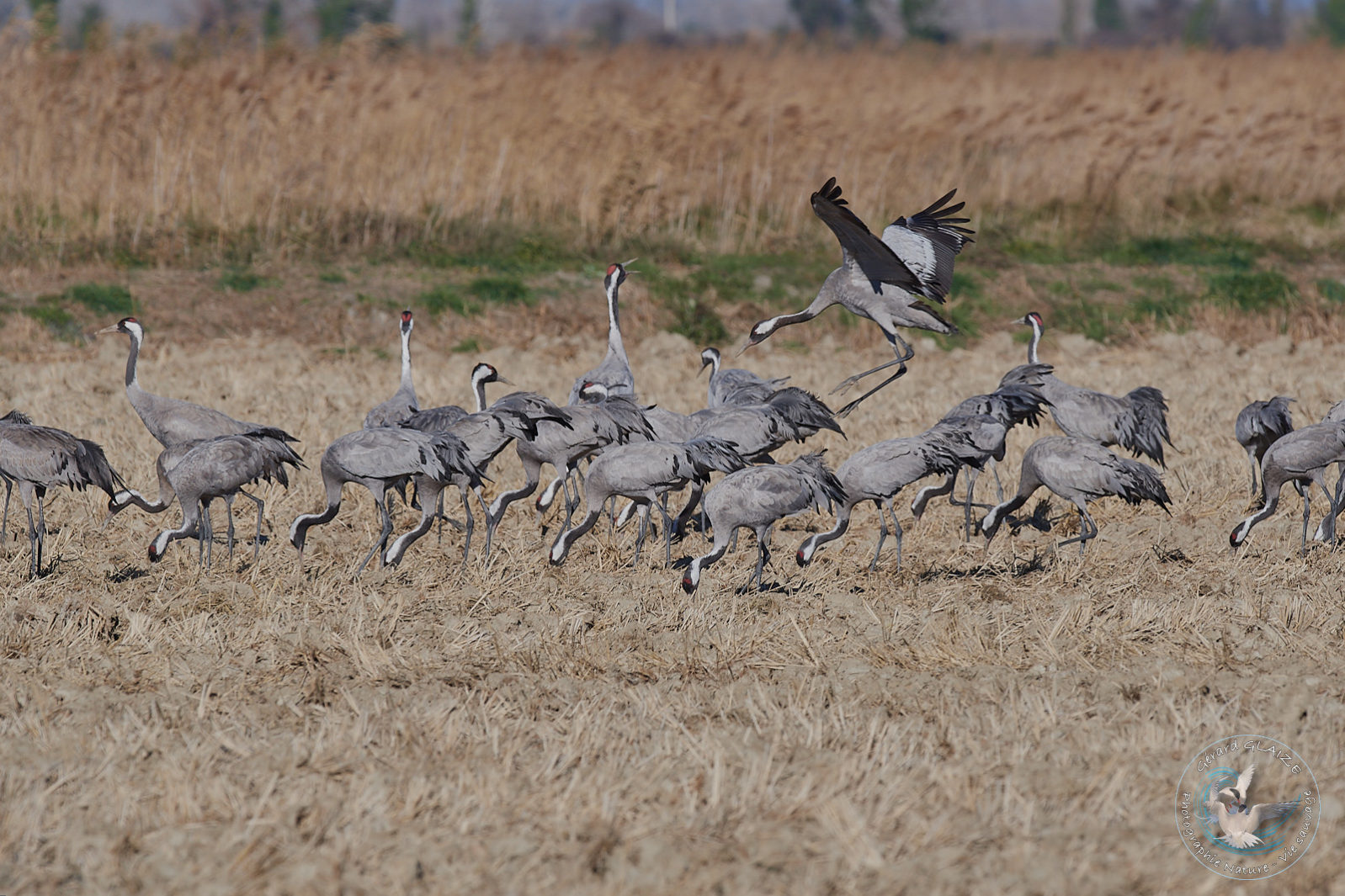
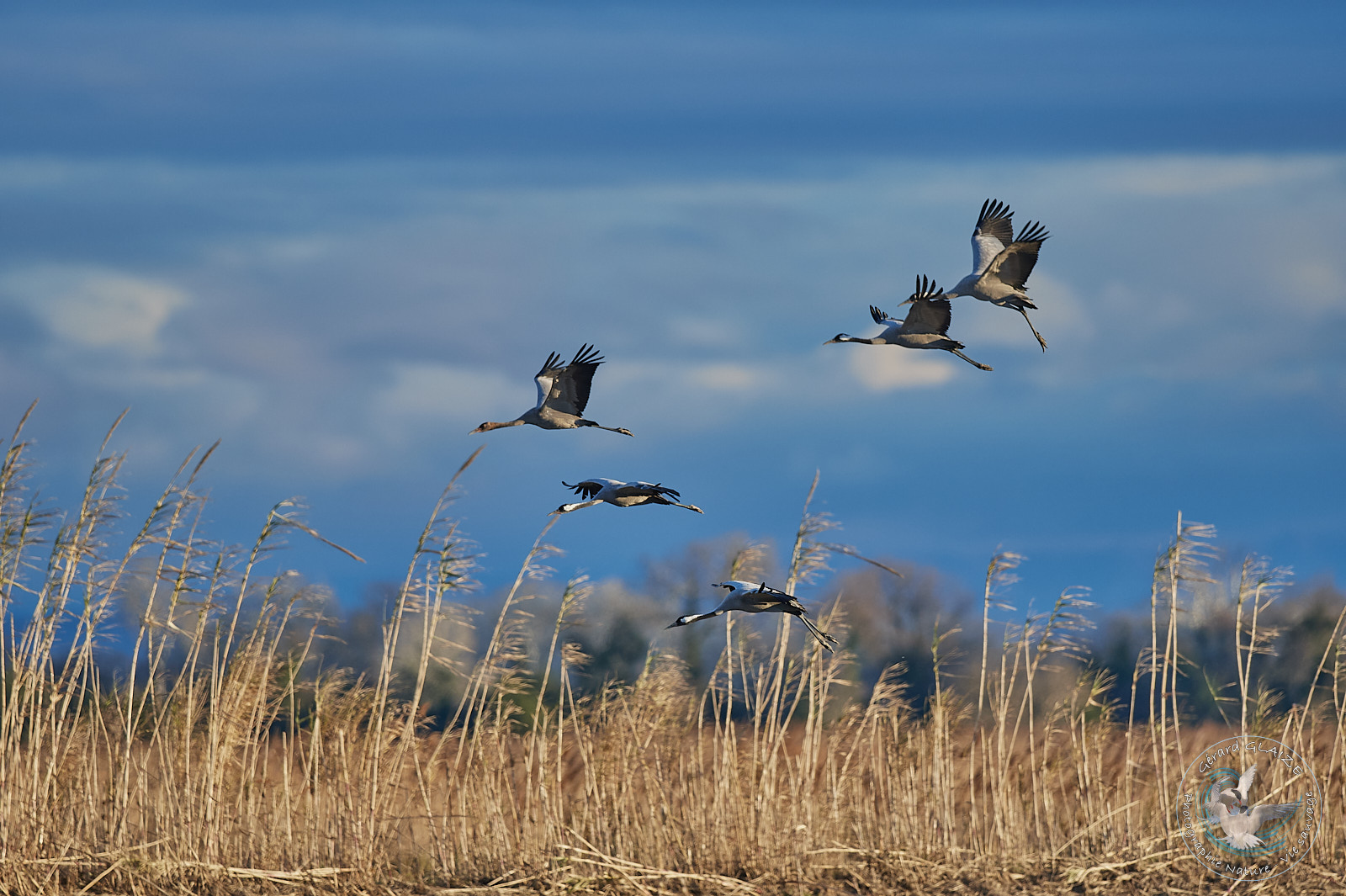
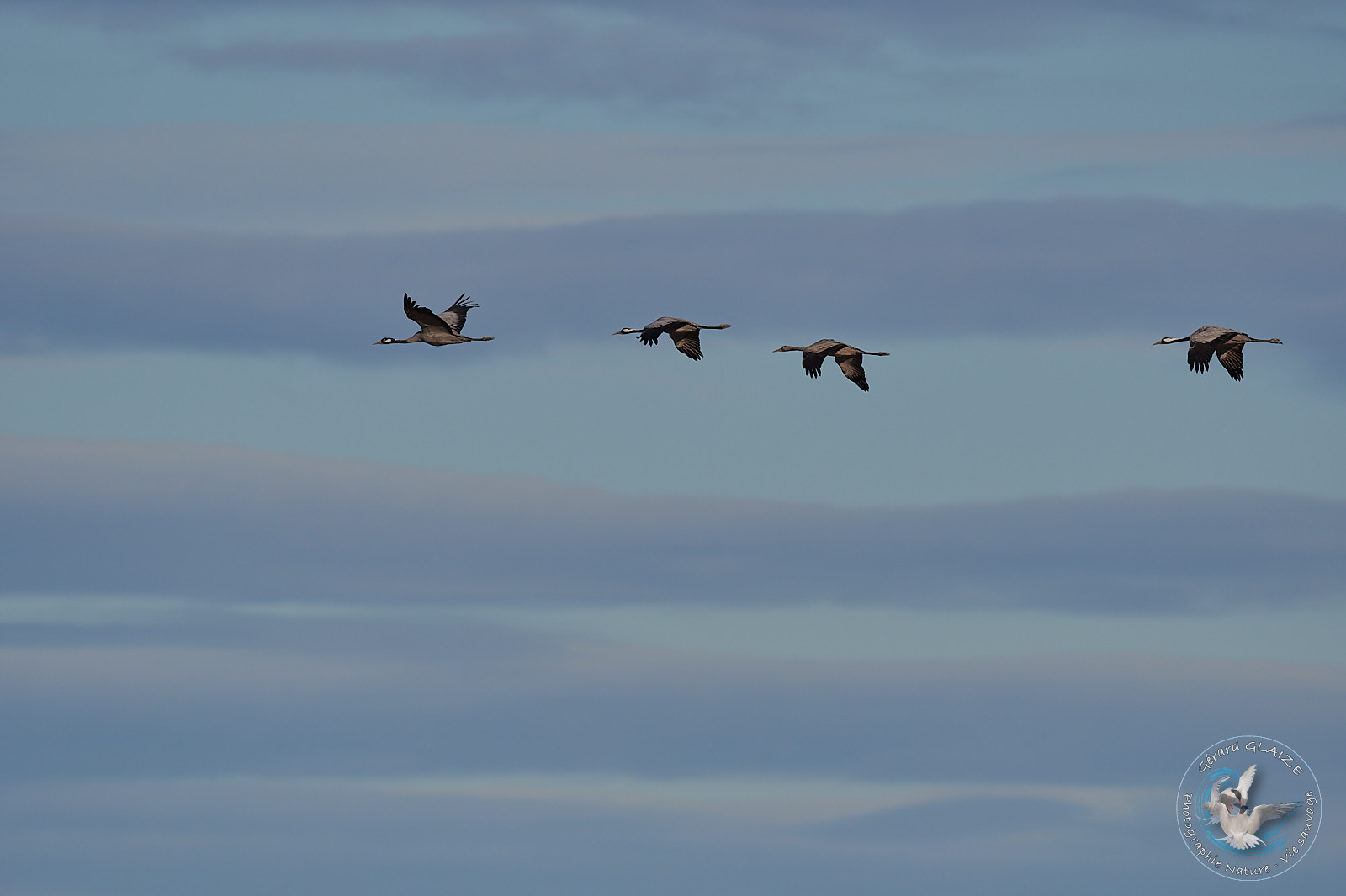
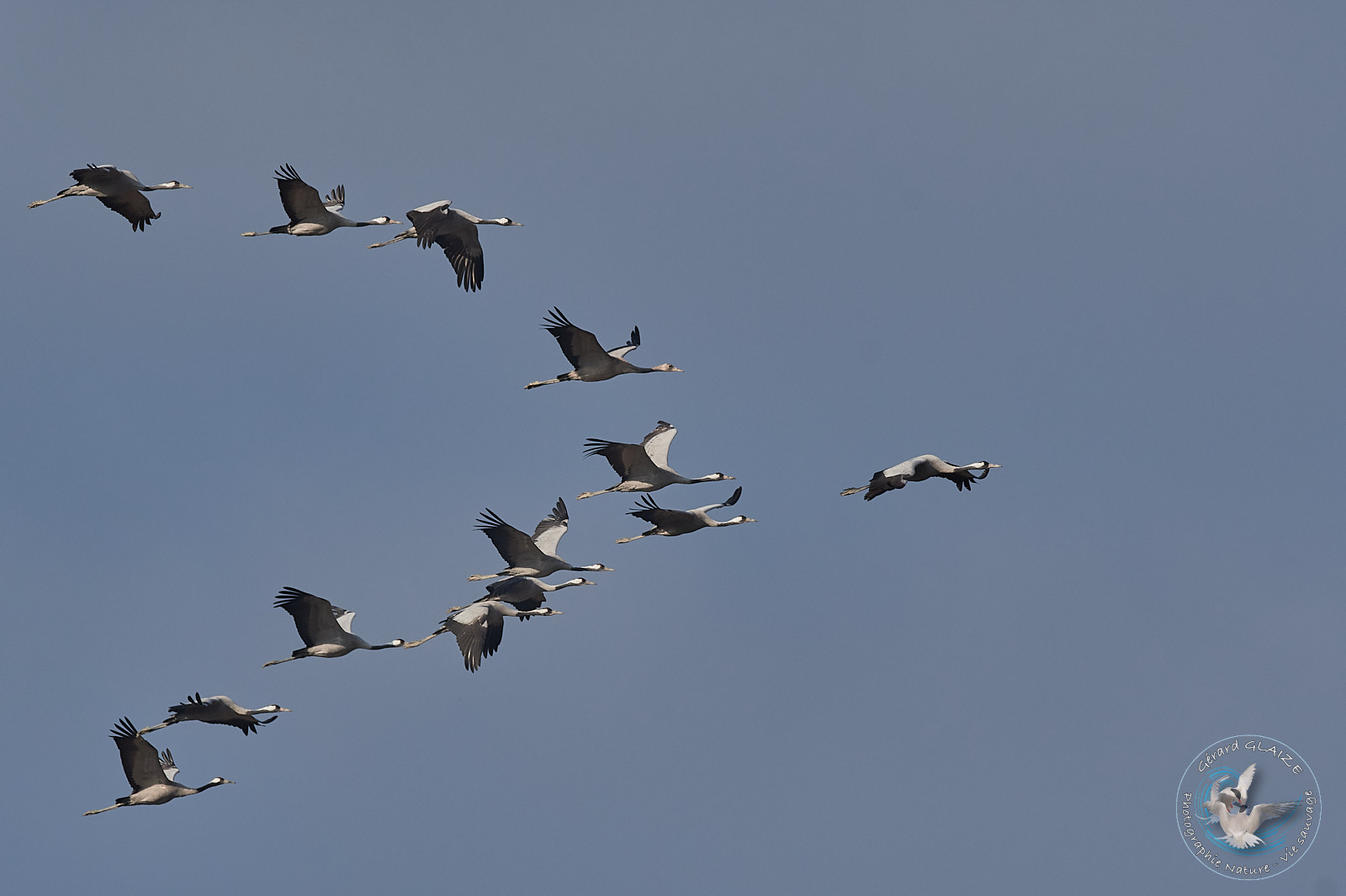
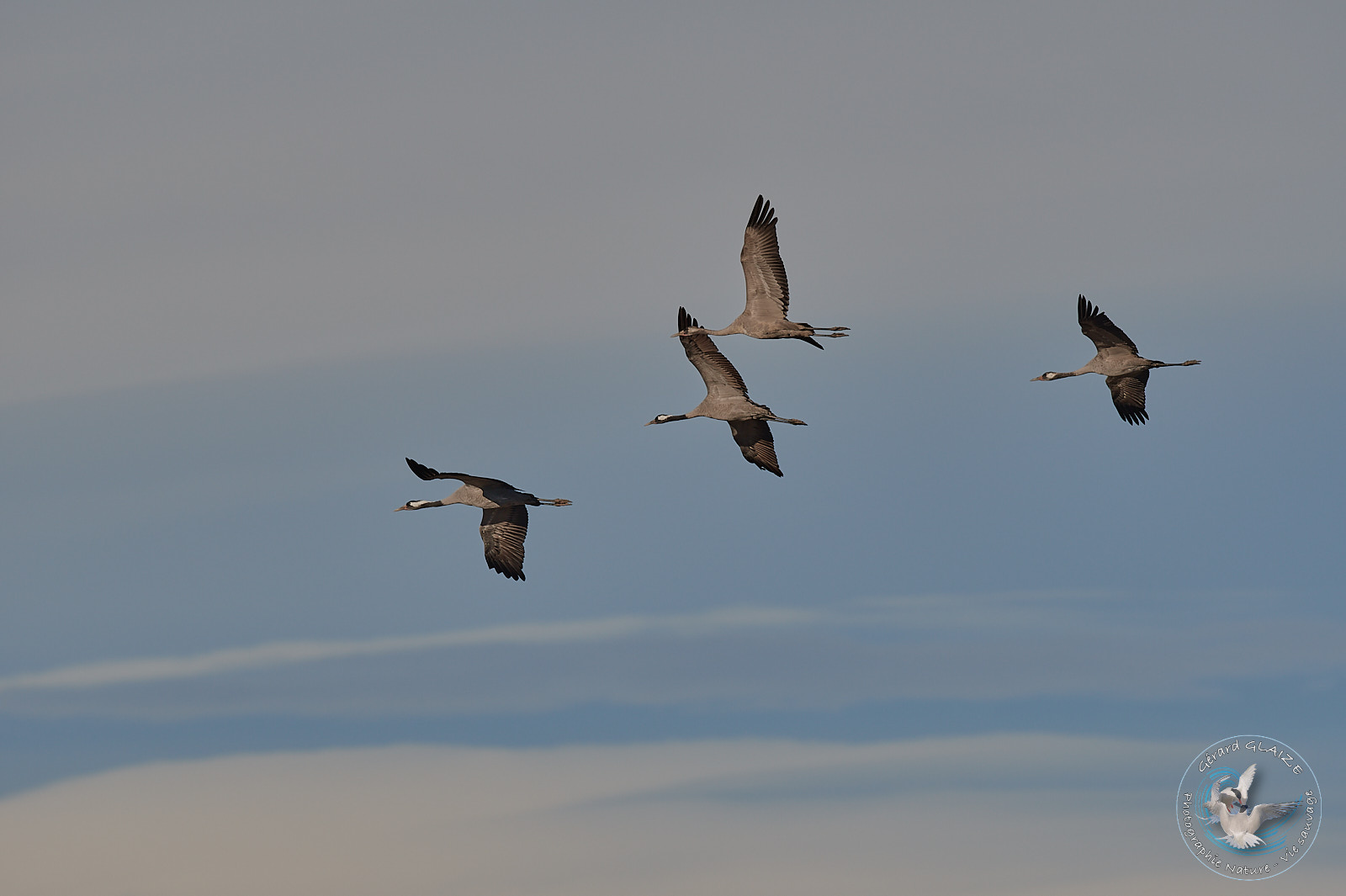
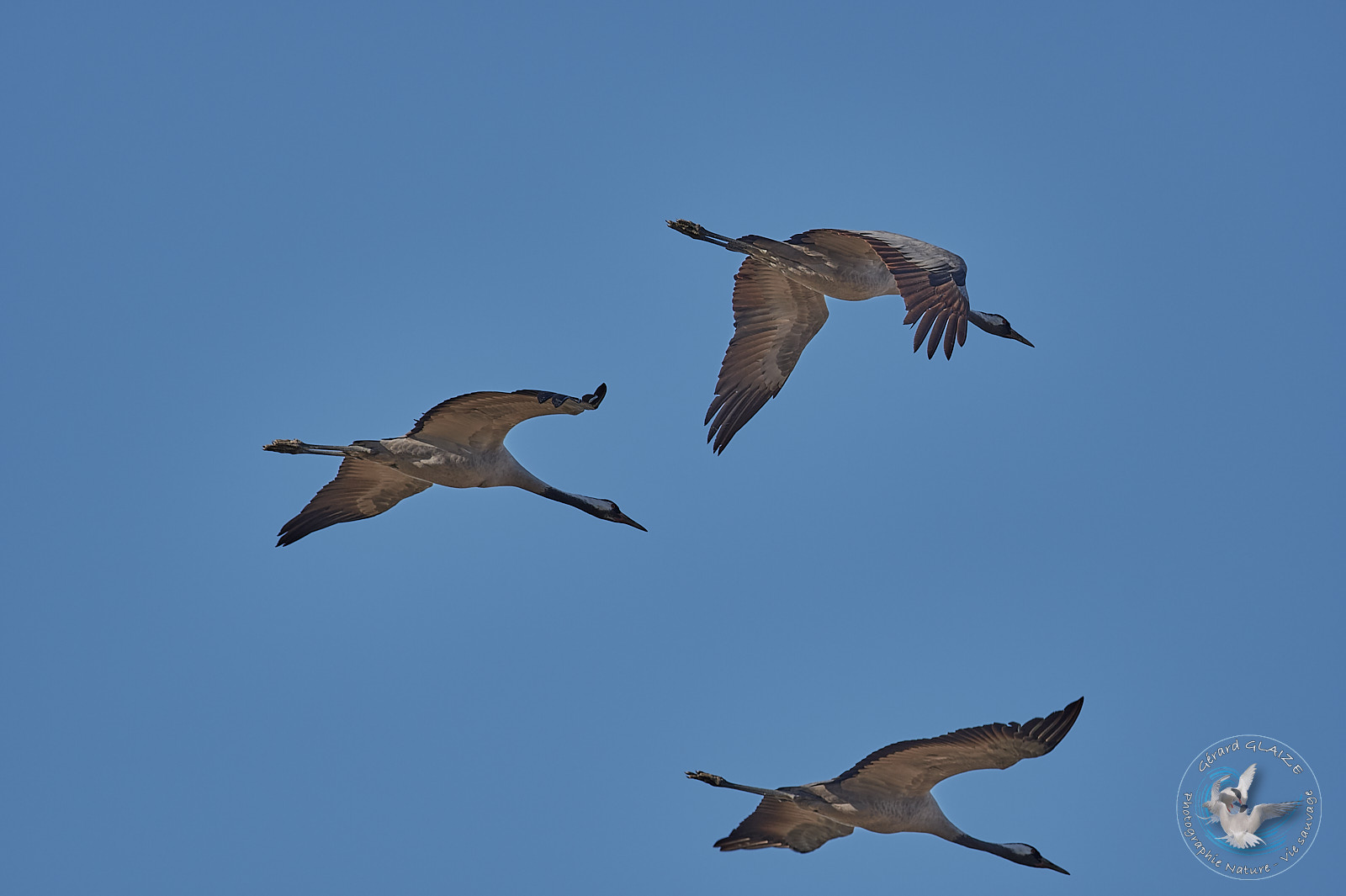
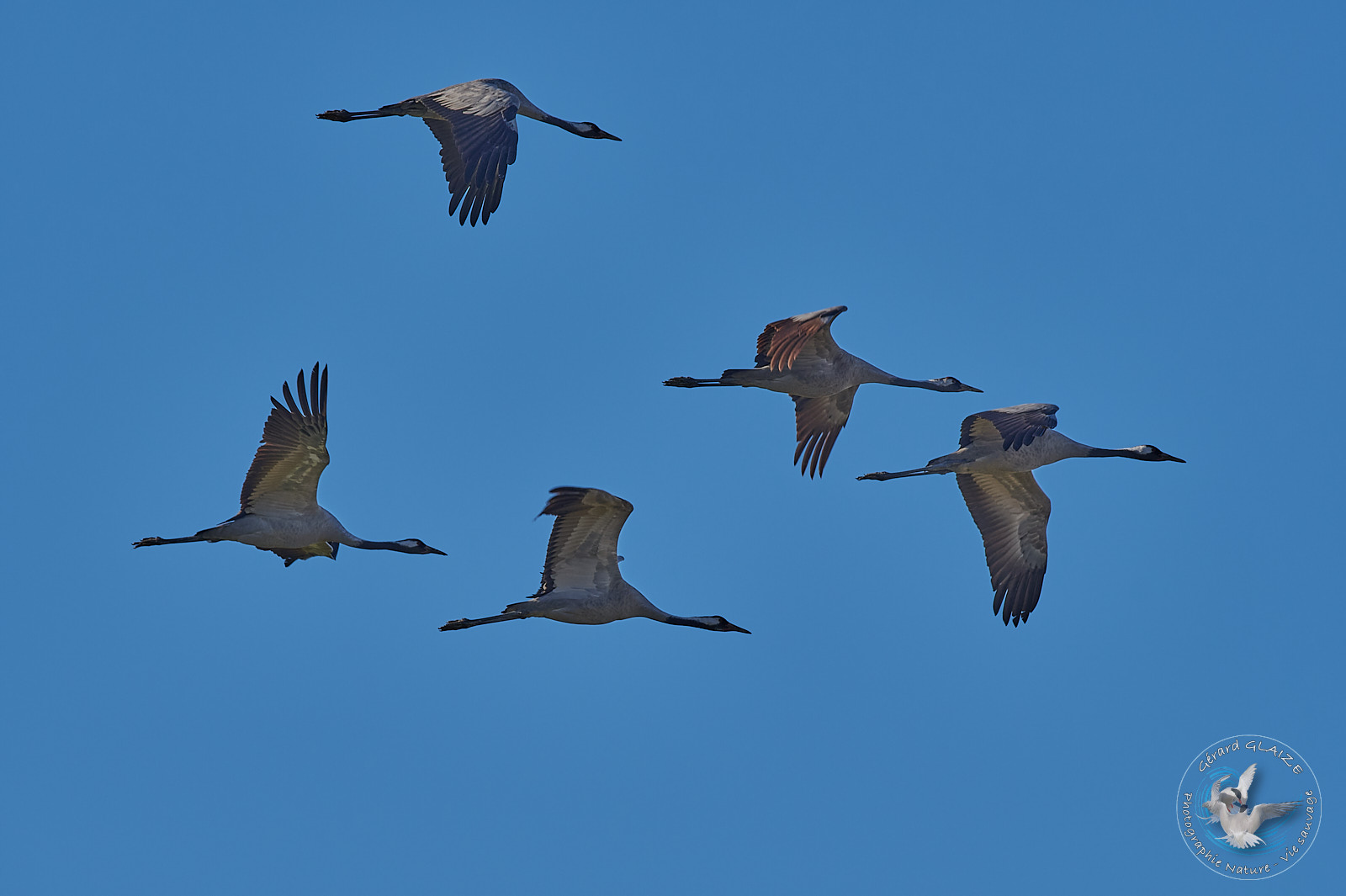
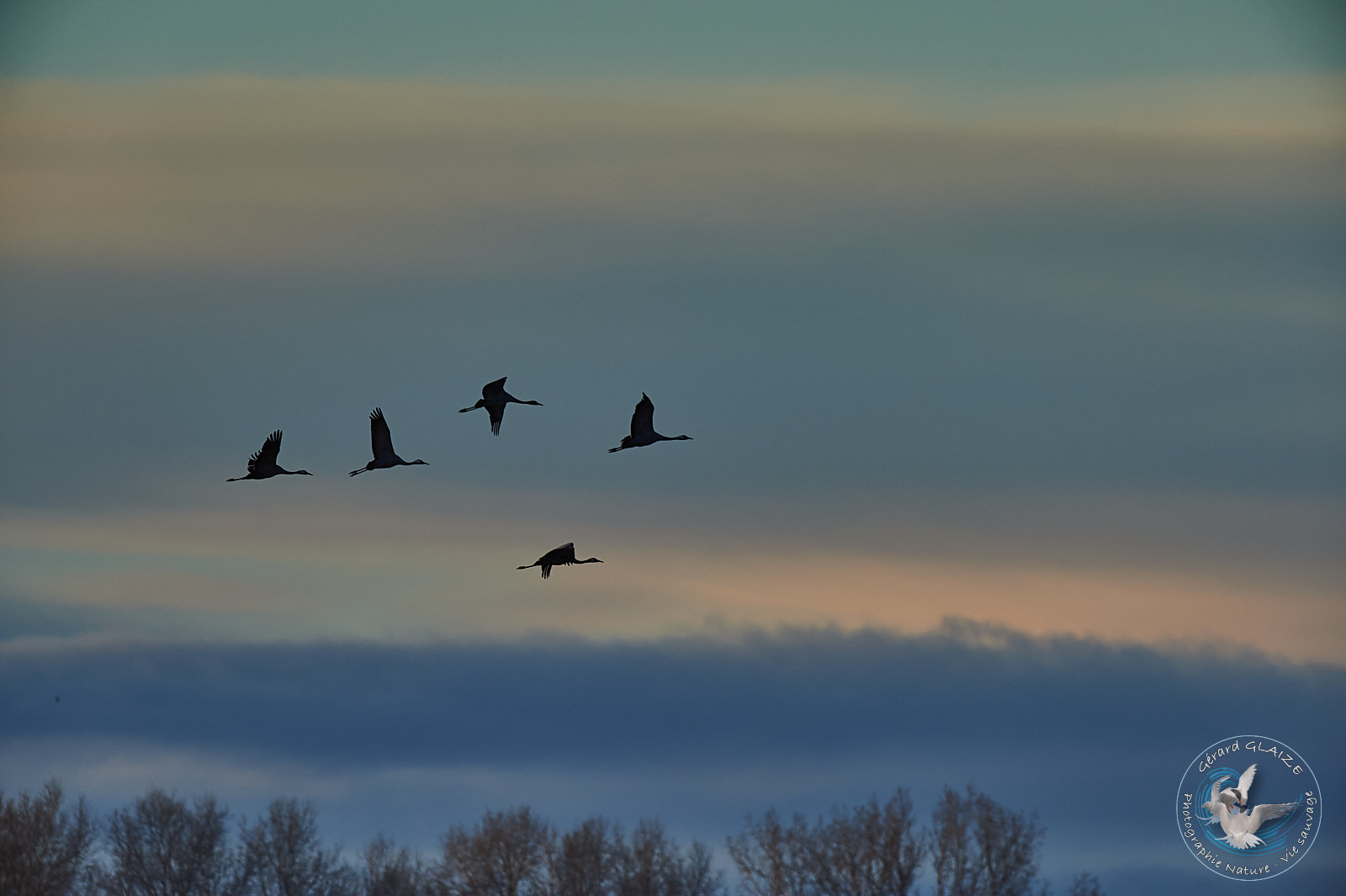



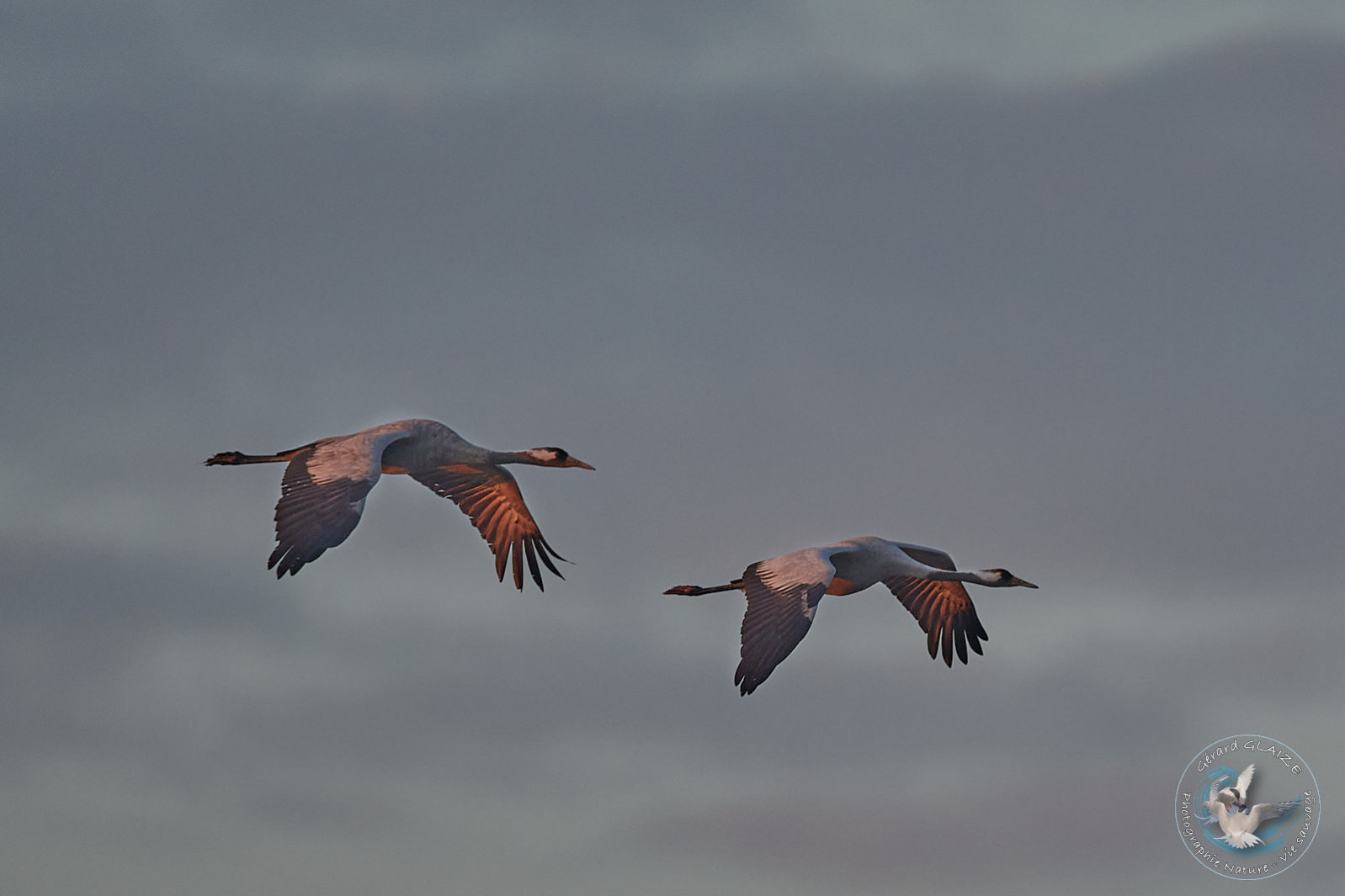
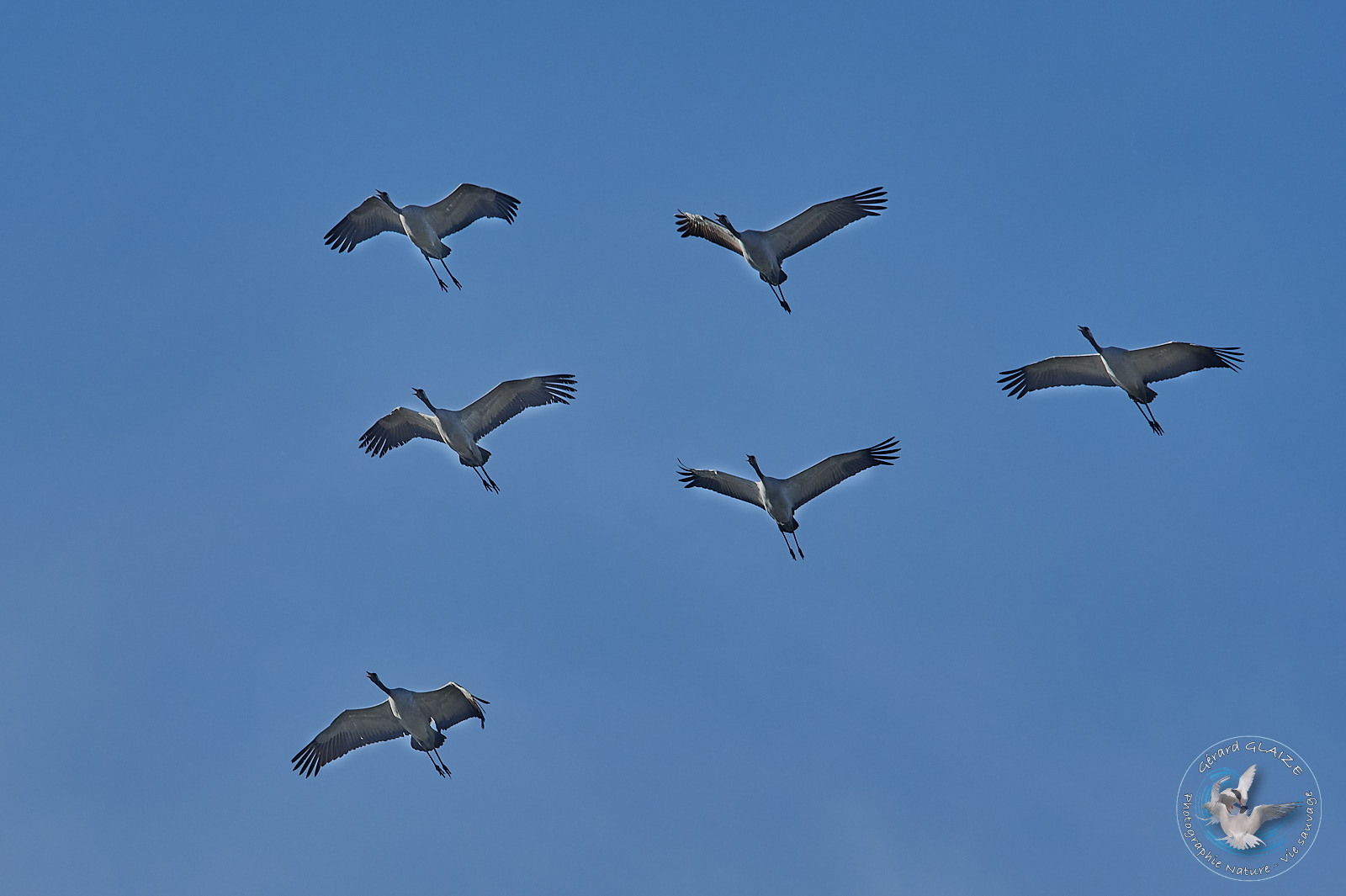


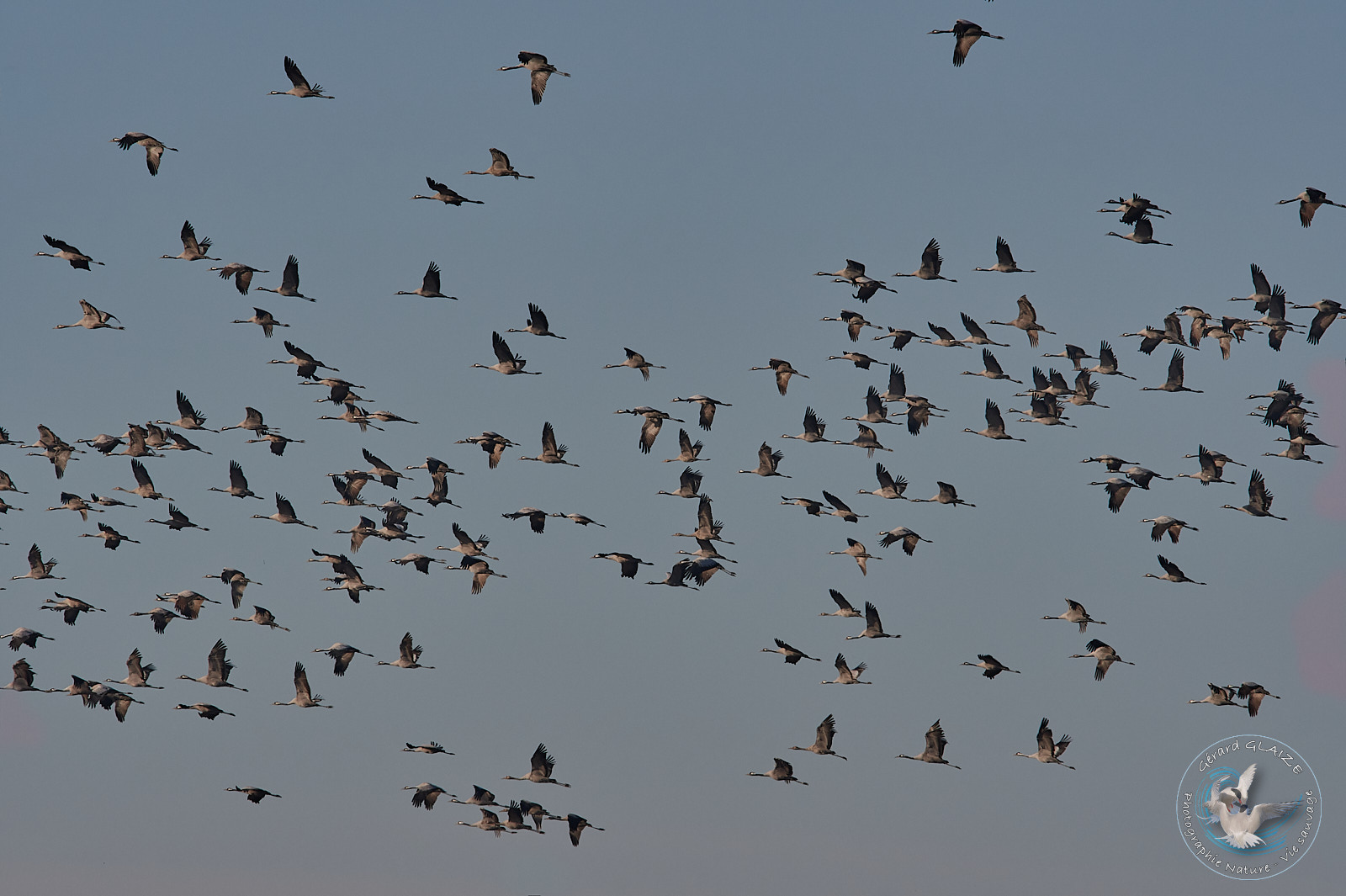
Regime – Diet
The common crane is omnivorous. It feeds on insects, seeds, grasses and young shoots as well as molluscs and worms. In winter, holm oak acorns, olives, remains of corn crops, rice fields or other seeds constitute its diet.
Nesting
The Common Crane breeds in Northern Europe and Western Asia. Courtship displays begin in February. The couple, united for life, nests solitary in wooded or humid areas, or on an islet. On a large platform made of dry grass, there is the nest placed on the ground. The female first lays one or two eggs. Incubation lasts about 4 weeks, carried out by both parents. So shortly after hatching, the chicks are able to follow their parents and sneak into the marshes in search of food.
The 2-month-old young take flight between mid-July and the end of August, but they remain with the parents until the end of winter.
Cranes transiting through France mainly nest in Sweden, Finland, Northern Germany and Poland.
Migration
They are powerful birds that migrate approximately 2,500 km distance. They spend the winter in North Africa or southern Europe (south of Spain). However, since the 2000s, due to global warming, we have observed that some birds winter in central France.
France is therefore an important host country for cranes coming to stop over or to winter. The main sites frequented are more precisely the Der lake, the Arjuzanx site, the Puydarrieux lake and the Camargue, the numbers of which have continued to grow regularly in recent years (1).
Common cranes also have the habit of using thermal lifts to rise while gliding and migrate by moving from one thermal to another, avoiding flapping flight. This way, they hover and save their energy.
Protection
The Common Crane has benefited from total protection on French territory since 1976. It is also listed in Appendix I of the European Union Birds Directive. It is therefore prohibited to destroy, mutilate, capture or remove it, intentionally disturb it or naturalize it, as well as destroy or remove eggs and nests and destroy, alter or degrade their environment.
Other
(1) Until recently very rare in the Camargue, if not almost absent, the Common Crane has experienced a very significant expansion there since the end of the 2000s. Counted every year in winter since 2003-2004 by a network of observers coordinated by the Tour du Valat, on around ten sites in the Grande Camargue and the Gard Camargue, the figures for the population of wintering cranes show a very rapid progression. From a maximum of a few dozen individuals between the 1950s and the end of the last century, 200 birds were counted at the beginning of 2004, 300 in 2006, 3,600 in 2012, more than 14,000 in 2017, and around 15 500 in January 2018.
In the space of just over a decade, the Camargue has become a site of major importance for the wintering of common cranes in Europe, over the period extending from November to early March.
Cry
The call of the common crane is a piercing, nasal “krooh” carried far away. However, on the breeding grounds, adults emit more musical duets.


